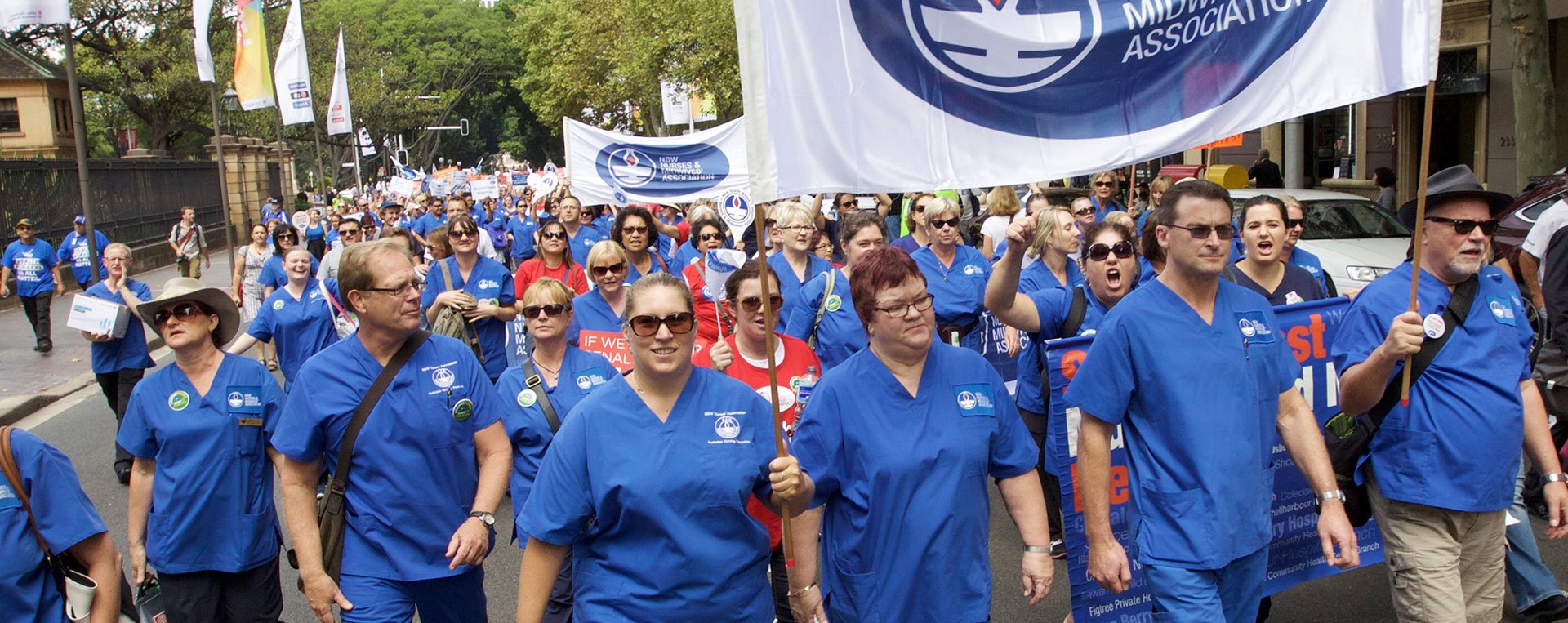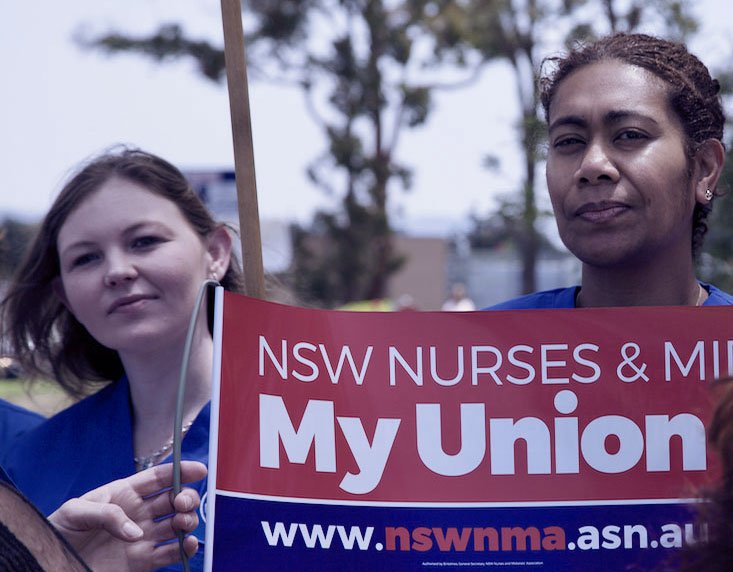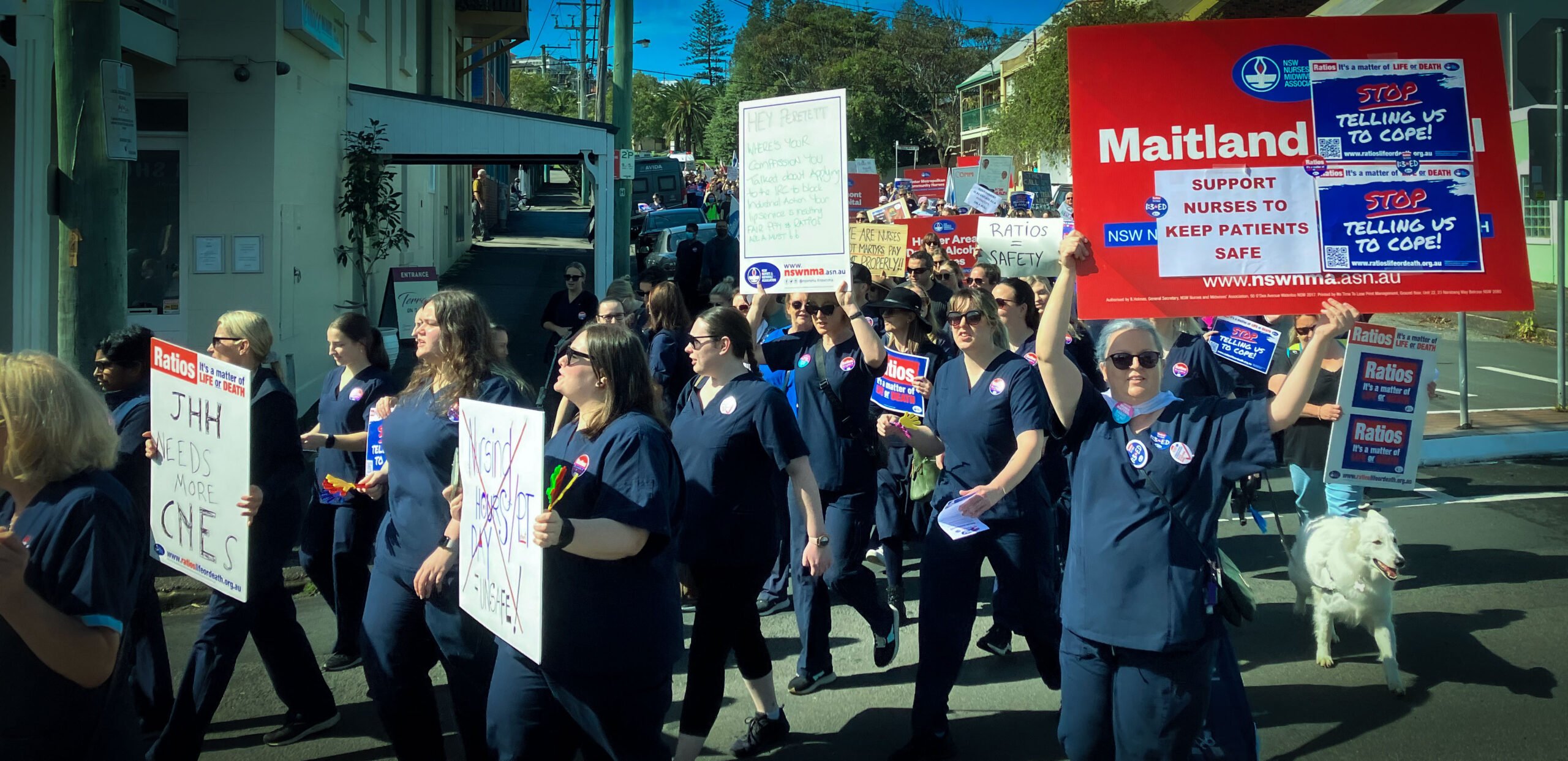Further evidence of the unsustainable strain on public hospital emergency departments (ED) has prompted angry calls for the NSW government to stop risking patients’ lives and introduce reliable shift by shift staffing ratios.
The NSW Nurses and Midwives’ Association (NSWNMA) issued the warning after Bureau of Health Information (BHI) data for January to March 2022 showed patients waited longer for ambulance transfers, for treatment in ED, and to be admitted to a ward, despite less attendances overall than the same quarter in 2019.
NSWNMA Acting General Secretary, Shaye Candish, said as the Omicron variant ran rampant in the community, patients requiring triage category 2 ‘emergency’ care waited longer for ED treatment compared to any January to March quarter on record.
“The latest hospital data reinforces what we were hearing from members at the time about the incredible pressure they were working under, not long after the NSW government took their ‘let it rip’ approach in mid-December,” said Ms Candish.
“Members tell us that pressure and the strain on the health system continues today, with the winter peak well and truly upon us.
“According to the BHI results, barely a quarter (25.8%) of patients who were treated and admitted to hospital spent less than the benchmark of four hours in the ED. Alarmingly, one in 10 of them spent over 18 hours and 29 minutes in ED.
“How can the NSW government continue to call this ‘world class’ care? Our state desperately needs a transparent nurse-to-patient ratios system to improve staffing, reduce workloads and help manage the ongoing demand.”
NSWNMA Acting Assistant General Secretary, Michael Whaites, said calls for one nurse to every three ED treatment spaces (1:3 in ED) would go a long way to curb the rising number of patients who are leaving without even being seen.
“A record 55,305 patients left EDs during January to March either without being seen, or before finishing treatment, that’s the worst it’s ever been and it must be addressed,” said Mr Whaites.
“One in 10 who arrived by ambulance also waited almost an hour (54 minutes) to be transferred to ED staff. This is the opposite of the level of safe care patients in NSW deserve.
“The volume of COVID-19 patients requiring hospitalisation during the January peak put enormous strain on the entire public health system. Meanwhile, almost 20,000 (18,627) elective surgery patients had waited longer than clinically recommended by the end of the quarter.
“The NSW government can start to fix this now by introducing shift by shift staffing ratios, because clearly its preferred staffing method is no longer fit for purpose and our health system will continue to suffer until change occurs.”








